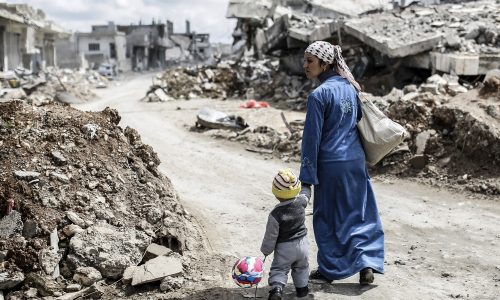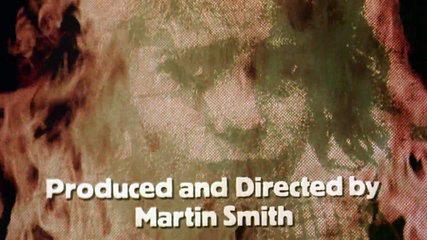A Season of War
This is a season of war: here in the Fertile Crescent, there in the North and Horn of Africa, in Europe between Russia and Ukraine…
The statistics alone are enough material with which one can draw the starkest of portraits of this age. But along with the faces of war’s victims, the numbers are always the first to get lost in the fog of intense conflict and fading memory, even if the countless books on humanity’s countless follies archive the details of their costs. Almost always, it is left for novelists and filmmakers to distill intimate tales from monumental events, but almost always, these too are nudged back into their artistic realms every time we prepare to go at each other again.
So, in recognition of this moment, I thought I would pull some statistics together to show how easily the specifics of suffering are forgotten even by those who have suffered war’s toll the most. Because if they were remembered, truly remembered, we wouldn’t be where we are now. And it amazes me to no end how soon after their passing we gloss over the painful facts and how soon we revert to repugnant behavior in pursuit of whatever we insist on keeping that is not ours or having what belongs to others.
Because that’s the essence of most wars isn’t it? The unjustness of it all when we hunger for power, or land, or property, or precious metals, or strategic advantage, or even for the histories and national identities of others. Or when we submit to sheer sadism, racism, tribalism, sectarianism, or all combined.
By sheer coincidence my late summer reading was Tony Judt’s Post War, A History of Europe Since 1945 (2005). It was my second time around. The age called for it. Those who have read it know that the first part of the book is dedicated to laying out the minutiae of the devastation visited upon Europe in World War II. Judt devotes pages dizzy with figures and percentages, peppering them with well-placed piercing insights designed to give the facts the hideous meaning they deserve. He may not have intended it, but the tally coalesces into a picture that is quite simply mesmerizing.
Thirty-six and a half million people died in WWII between 1939 and 1945, 19 million of them civilians. “No other conflict in recorded history killed so many people in so short a time,” writes Judt.
The physical damage to civilian habitats alone was horrifying. Four hundred thousand–that’s 400,000–tons of shells fell on Berlin in the last 14 days of the war alone. Warsaw was “torched and dynamited practically house by house by the retreating German army.” France lost 500,000 dwellings, the Soviets 70,000 villages and 1,700 towns. One-third of Greece’s forests were burned and 1000 of its village destroyed.
The World at War BBC Documentary, 1973
Now ponder these losses in Yugoslavia: 25% of vineyards, 50% of livestock, 60% of roads, 10% of the population, 75% of ploughs, railways, and bridges.
By the end of the war, the Soviet Union’s homeless were 25 million, topping Germany’s 20 million. And when the war ended, revenge was borne, as always, by the women of the losing side: 87,000 Viennese women were raped by “liberating” Soviet soldiers, and 150,000 to 200,000 Russian babies were born in the Soviet occupied part of Germany in 1946-47.
In 1945, the war’s orphans numbered 49,000 in Czechoslovakia, 53,000 in Germany, 60,000 in the Netherlands, 200,000 in Poland, and 300,000 in Yugoslavia.
Are you still with me?
The violent population transfers told a story no less epic in its significance and implications. “Between them, Stalin and Hitler uprooted, transplanted, expelled, deported and dispersed some 50 million people” between 1939 and 1943. At the end of the war, “the process was reversed.” Thirteen million ethnic Germans in Eastern Europe were resettled to West Germany. Practically every multiethnic Central and East European country before the war was literally purified. Very soon after WWII, modern Europe became, for the most part, a continent of glaringly homogenous nation-states.
As Judt succinctly puts it: “ At the conclusion of the First World War it was borders that were invented and adjusted, while people were on the whole left in place.” With the second one, it was the other way around. The result: “A new tidier Europe was born.”
“Cycles of predation” is how Judt describes the way victims and predators took turns throughout the war and in the years immediately after. During Nazi rule, the Jews and other minorities were stripped of all assets of note–not to mention of life itself. When the Nazis were gone, it was the turn of ethnic Germans and company to experience the same. In Czechoslovakia alone, “goods and properties seized from the Germans and their collaborators amounted to 25% of the national wealth.”
Such became the trend for us here in the Fertile Crescent. A recently independent people, we watched as Palestine fell on the other side of a fence woven tight from someone else’s hunger and nightmares and dreams.
And to think, in no time at all, many of us kept at it throughout the ensuing years on many a continent. And here we are in the thick of it again. In Syria, the physical devastation of the civil war is estimated at $200 billion, 500,000 people have died, and 13 million people, half of the population, have been internally and externally displaced. Entire sections of the country have been cleansed. In the Iraq of the post-American invasion, the most conservative estimates place the dead at 280,000, the displaced at 5 million. Libya, a lump of severed body parts, is “the world’s largest uncontrolled ammunition stockpile, with an estimated 150,000 to 200,000 tonnes of uncontrolled munitions across the country.”

And so the sorry story goes for every country whose people rose only to be made to fall on their banners of freedom and bread and dignity as if on their own swords. Comes now Ukraine, and war in Europe again, a blood-soaked clash as simple as it is complicated already causing much misery as it unfolds.
For Judt, what was truly astounding was the miraculous recovery Europe achieved so soon after the wholesale mayhem; the stability and growing prosperity that underpinned decades of West European peace and tranquility and saw the gradual formation of the European Union.
War’s true costs, in the end, are also the business of the peace constructed on its ruins. A lesson, we in Lebanon for one, did not learn in 1991 as we proceeded to entrench the deformities of the civil war as the anchors of the so-called peace and, worse, proceeded to celebrate the arrangement as yet another example of Lebanese ingenuity.
Excerpt from Chapter Eight in This Arab Life: The Livid Moment
Barely a couple of weeks after my arrival in Beirut in 1991, I rode down from a dinner party in Beit Meri with Riad, a friend. He took us through the center of town for a fly-by-night tour. As we entered at a crawl, buildings stood crucified on both sides of the road; an honor guard to the horror show about to unfold. For a few minutes, we were alone, two people gaping at the hideousness of human strife. Only Riad’s voice, guiding me through the images, and the wheels grinding on gravel pierced the night’s hush. In matters of war and its special kind of death of places and human beings, I was naïve. I sat still, eyes flitting between vistas of rubble, imagining the dead bemoaning a life so needlessly and cruelly cut short. Then, in the near distance, an eye-level faint light shone. As we approached, we saw coffins in different sizes and types of wood in the lone workshop. In it was an old coffin maker carving his way through another abode for the hereafter.
In the very early hours of “peace,” in the dead of night, in a cemetery of everything wondrously Lebanese, the only human activity was a retail business to permanently house cadavers. Had I had a camera on me. If only.
****
On Another Note
I have read many a searing book review, but none as cutting and dismissive as Ryan Ruby’s of Ian McEwan’s latest novel, Lessons. Here’s a peek:
Everything in Lessons, whose story concludes within a year and a half of its publication date, gives the impression of having been written in extreme haste. Its prose, for example, is pocked with first-order clichés (‘trying to escape his own demons’), second-order clichés (‘a demon he hoped to slay’), dull metaphors (‘Time, which had been an unbounded sphere in which he moved freely in all directions, became overnight a narrow one-way track down which he travelled’), mixed metaphors (‘ten on the pain spectrum’), limp similes (‘Some love affairs comfortably and sweetly rot. Slowly, like fruit in a fridge’), oxymorons (‘a settled, expansive mood’)…
You will notice the review is almost as long as McEwan’s book as if Ruby wanted to prolong the slaying as long as he could. Not a comfortable read, least of all for McEwan himself, I am sure.
Jenine Abboushi went back to Palestine with her children recently. Hers is a stunning essay on Israel’s Intimate Separations. She writes: “Israel’s feverish colonization has created unreal cities, settlements, and “territories.” And for all inhabitants in this small land, one or more of these realms is unattainable in every sense.”

